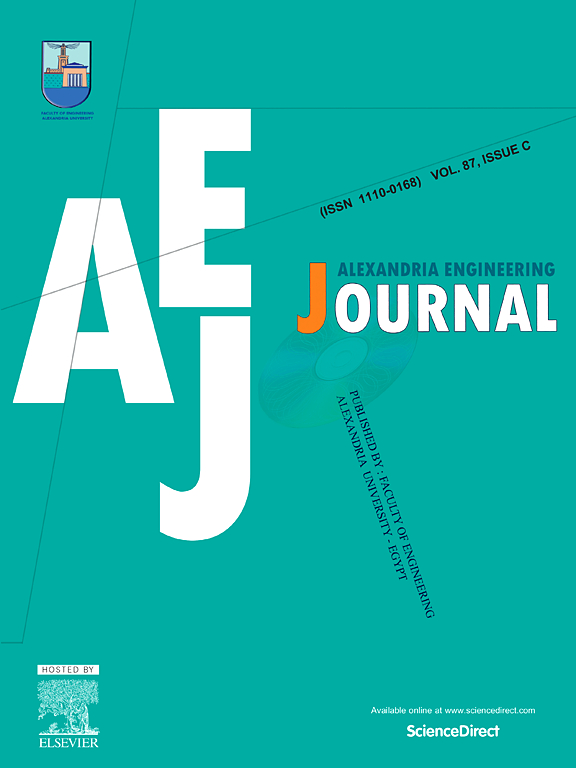Melting ternary hybrid nanofluid stagnation point flow with velocity slip past a stretching/shrinking sheet: Numerical simulation and validation via P2SATRA
IF 6.2
2区 工程技术
Q1 ENGINEERING, MULTIDISCIPLINARY
引用次数: 0
Abstract
Ternary hybrid nanofluids are crucial to be modeled and researched before their commercial application as a heat transfer fluid. This study investigates the stagnation point flow of a ternary hybrid nanofluid past a stretching/shrinking sheet, focusing on the influence of the melting parameter and second-order velocity slip. The governing partial differential equations (PDEs) are initially formulated and subsequently reduced to ordinary differential equations (ODEs). These ODEs are further transformed into first-order form and numerically solved using the bvp4c solver in MATLAB. Stability analysis is conducted due to the existence of two potential solutions, of which only one proves stable upon analysis. The numerical results indicate significant enhancements in heat transfer performance under conditions of elevated melting and enhanced velocity slip. Reducing the melting parameter and second-order velocity slip may expand the solution range, leading to a delay in boundary layer separation. The stable numerical solution for the heat transfer rate is then validated with the use of a logic mining model namely Permutation 2 Satisfiability Reverse Analysis (P2SATRA). The most accurate induced logic, chosen to illustrate the overall relationship between the selected parameters is achieved in the third fold of a 10-fold cross-validation, yielding an accuracy of 0.81818.
熔融三元混合纳米流体停滞点流动,速度滑过拉伸/收缩片:通过 P2SATRA 进行数值模拟和验证
在将三元混合纳米流体作为传热流体进行商业应用之前,对其进行建模和研究至关重要。本研究探讨了三元混合纳米流体经过拉伸/收缩薄片时的停滞点流动,重点研究了熔化参数和二阶速度滑移的影响。首先制定了控制偏微分方程 (PDE),然后将其简化为常微分方程 (ODE)。这些 ODE 进一步转化为一阶形式,并使用 MATLAB 中的 bvp4c 求解器进行数值求解。由于存在两个潜在解,因此进行了稳定性分析,其中只有一个在分析后证明是稳定的。数值结果表明,在熔化程度升高和速度滑移增强的条件下,传热性能显著提高。降低熔化参数和二阶速度滑移可能会扩大解的范围,导致边界层分离延迟。然后,利用逻辑挖掘模型,即 Permutation 2 Satisfiability Reverse Analysis (P2SATRA),对传热速率的稳定数值解进行了验证。在 10 倍交叉验证的第三倍中,选择了最准确的诱导逻辑来说明所选参数之间的整体关系,准确率为 0.81818。
本文章由计算机程序翻译,如有差异,请以英文原文为准。
求助全文
约1分钟内获得全文
求助全文
来源期刊

alexandria engineering journal
Engineering-General Engineering
CiteScore
11.20
自引率
4.40%
发文量
1015
审稿时长
43 days
期刊介绍:
Alexandria Engineering Journal is an international journal devoted to publishing high quality papers in the field of engineering and applied science. Alexandria Engineering Journal is cited in the Engineering Information Services (EIS) and the Chemical Abstracts (CA). The papers published in Alexandria Engineering Journal are grouped into five sections, according to the following classification:
• Mechanical, Production, Marine and Textile Engineering
• Electrical Engineering, Computer Science and Nuclear Engineering
• Civil and Architecture Engineering
• Chemical Engineering and Applied Sciences
• Environmental Engineering
 求助内容:
求助内容: 应助结果提醒方式:
应助结果提醒方式:


